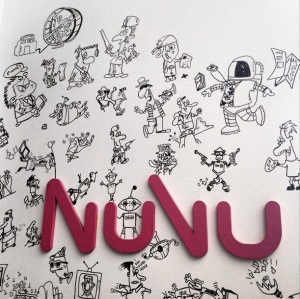Originally published on the Leadership + Design Blog on April 25, 2018
Let me set the scene for you. It’s 11:30am on the Friday before Spring Break. The sky is clouded over and the trees are rustling overhead. Leaves shake raindrops that have collected during the day’s sporadic downpours onto the ground below. On the sidewalk, two grown adults sit on the ground. I am one of them. I am aware we look ridiculous and out of place. I am aware this is not the best spot for a strategy session…but here we are. Behind me is a classroom of 11-13 year olds I am responsible for. They are busy trying to compile short videos that tell the story of their expeditionary learning experience that week. A short distance away is a young child who desperately wants to be successful, but for many reasons on this particular day is not. A series of bad choices have resulted in removal from the classroom….and now my colleague and I are stuck. What does this child need right now? What do the classmates need? What does the teacher need? What decision best balances the tension between necessary logical consequences and compassion? How will we enact our decision in a way that protects the child’s dignity? Also, how am I going to help my group of middle schoolers finish their summative project when we can’t properly format the video files? How many emails are piling up in my inbox that will need attention and thought after these things are done? Did I forget to eat something today? Are my jeans going to be all wet when I stand up from this concrete sidewalk? Is it Spring Break yet?

This scene, while unique in specifics to me on April 6, is representative in nature of the challenges of teaching and educational leadership today. Working with humans in community has always been both incredibly rewarding and (unsurprisingly) complicated and sticky. Add to that the proliferation of email and smart devices that, while making many aspects of life and work easier and more efficient, have also made everything faster. It is increasingly difficult to do just one thing at a time. It is increasingly complicated to prioritize tasks when there are so many avenues by which a new potential problem or proverbial fire might present itself. As leaders and teachers, how do we survive the fast-paced, ever-evolving, and multifaceted nature of our work? The authors of Whiplash, Joi Ito and Jeff Howe, suggest that the answer is resilience over strength. They write, “The classic illustration of resilience over strength is the story of the reed and the oak tree. When hurricane winds blow, the steel-strong oak shatters, while the supple resilient reed bows low and springs up again when the storm has passed. In trying to resist failure, the oak has instead guaranteed it.”
I would add that in order to truly be of service to children as educational leaders and teachers we need to cultivate a form of resilience that allows us to do more than just survive the work. The day I described above is excruciating and exhausting if I am merely seeking to survive it. Instead, I propose that there are 5 key behaviors that resilient leaders and teachers can practice to maintain balance and thrive in our profession.
Resilient leaders and teachers anticipate disruption. We expect that things will not always go according to plan and are agile enough to pivot quickly. We start “from the assumption that however strong your system is, it will be compromised…Resilience doesn’t necessarily mean anticipating failure; it means anticipating that you can’t anticipate what’s next, and working instead on a sort of situational awareness.” We recognize that no matter how skillful a leader or teacher we are, we WILL face opposition, challenge, and people who just plain don’t like us. There will be difficult parent meetings, students who challenge and confuse us in new ways, and lessons, meetings, or projects that don’t go quite according to plan.
This means that resilient leaders and teachers also normalize discomfort. They accept that in life and work they will encounter the disruptiveness of friction, frustration, and challenging emotions. They do not lead, plan, teach, or coach with the goal of avoiding or preventing uncomfortable moments. As Jeff Howe writes, “By trying to win, I’ll always lose. Only when I accept that there will be no winning or losing, just events unfolding and the way I choose to react to them, do I succeed.” Resilience is not an easy muscle to build. Like everything it requires practice and, by nature, truly practicing the art of resilience requires discomfort. Growth requires feedback and feedback requires a healthy level of familiarity with uncomfortable moments and feelings. Brené Brown puts it best in her book Daring Greatly:
“I believe that feedback thrives in cultures where the goal is not ‘getting comfortable with hard conversations’ but normalizing discomfort. If leaders expect real learning, critical thinking, and change, then discomfort should be normalized: ‘We believe growth and learning are uncomfortable so it’s going to happen here — you’re going to feel that way. We want you to know that it’s normal and it’s an expectation here. You’re not alone and we ask that you stay open and lean into it.’”
Accepting and normalizing the sometimes uncomfortable nature of existence allows resilient leaders and teachers to cultivate mindsets that are open to possibility. This is the heart of the “teachable moment”, the opportunity that presents itself that is, at best, peripherally related to the original plan but more often than not is completely tangential. An openness to possibility allows for creative, positive, and unforeseen new strategies, connections, insights, and more.
As Ito and Howe point out, “A resilient organization learns…and adapts to its environment.” When we are open to possibility, resilient teachers and leaders are able to adapt through listening and reflection. As poet Alice Duer Miller writes, “Listening is not merely not talking, though even that is beyond most of our powers; it means taking a vigorous, human interest in what is being told us.’ When we are careful, vigorously interested, present listeners we are able to more deeply understand and empathize with those in our care. Habits of reflection keep us from stagnancy and reflection is the practice most likely to safeguard against repeating the same mistakes and failures time and again.
Finally, resilient leaders and teachers need to prioritize effective self-care. This means something different for every individual, but I firmly believe that unless we take care of ourselves by setting and respecting the boundaries we need for wholeness, rest, well-being, and joy then the siren song of notifications and news feeds and updates and email and other people’s “emergencies” will almost always end up dictating your inner world and priorities, and at worst color your perception of your own effectiveness. Intentionality has impact. Resilient leaders and teachers are intentional about what we give our life’s time and energy to.
These practices don’t promise resilience, but I do believe, as with all things, that practice makes better and will result in a steadily replenished well of stamina to joyfully, thoughtfully persevere in the profession. Empathy, flexibility, and gratitude are more powerful sources of fuel for the journey than rigid, uncompromising rules and systems.




 adults. As screens take hold in classrooms as well, being abreast of the most recent research and up-to-date findings (positive and negative) regarding screen time is necessary. Best parenting and teaching practices are constantly evolving – and though rules or recommended restrictions may shift in small and large ways…the take away should really be quality over quantity and everything in moderation.
adults. As screens take hold in classrooms as well, being abreast of the most recent research and up-to-date findings (positive and negative) regarding screen time is necessary. Best parenting and teaching practices are constantly evolving – and though rules or recommended restrictions may shift in small and large ways…the take away should really be quality over quantity and everything in moderation. In his book
In his book